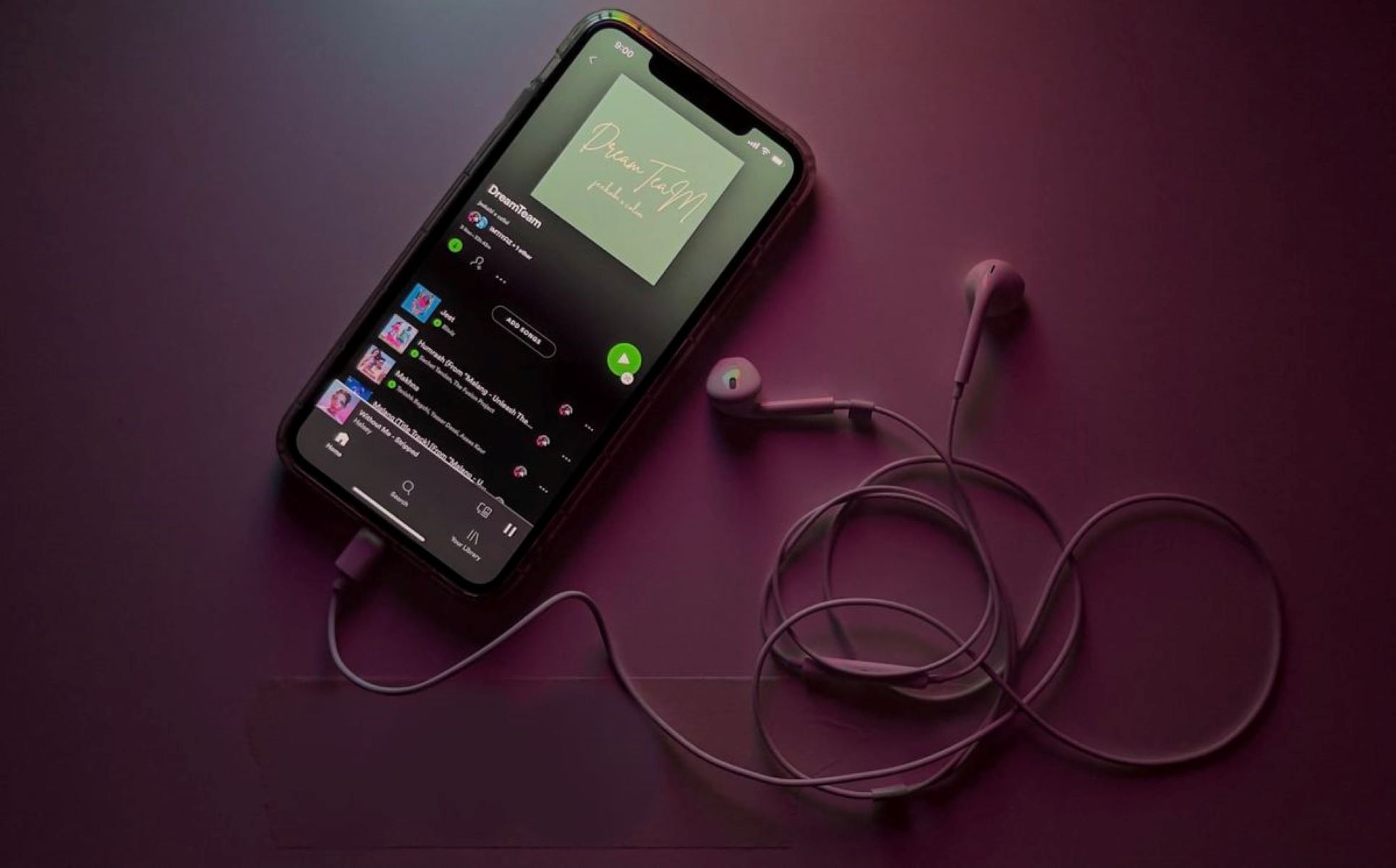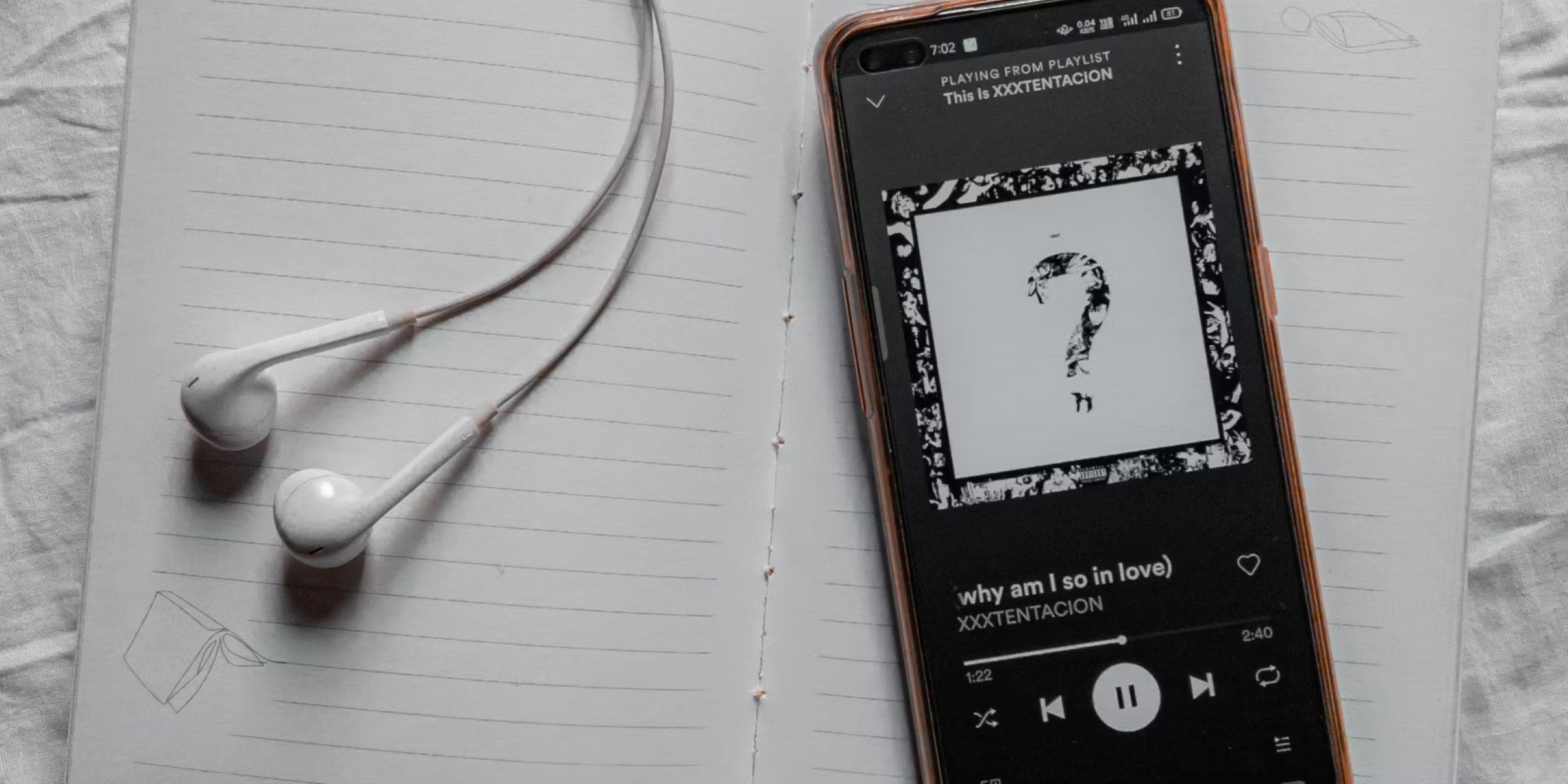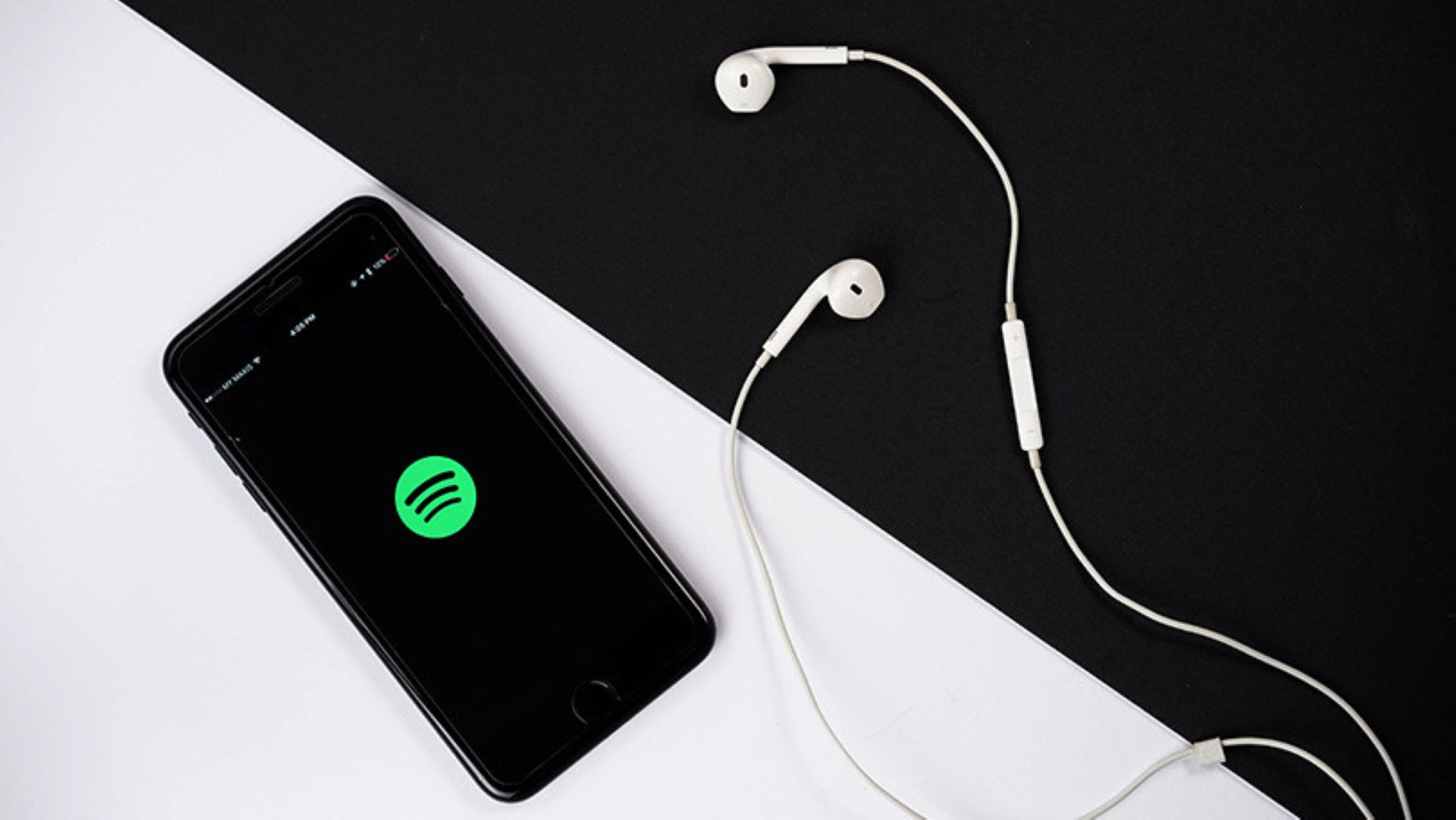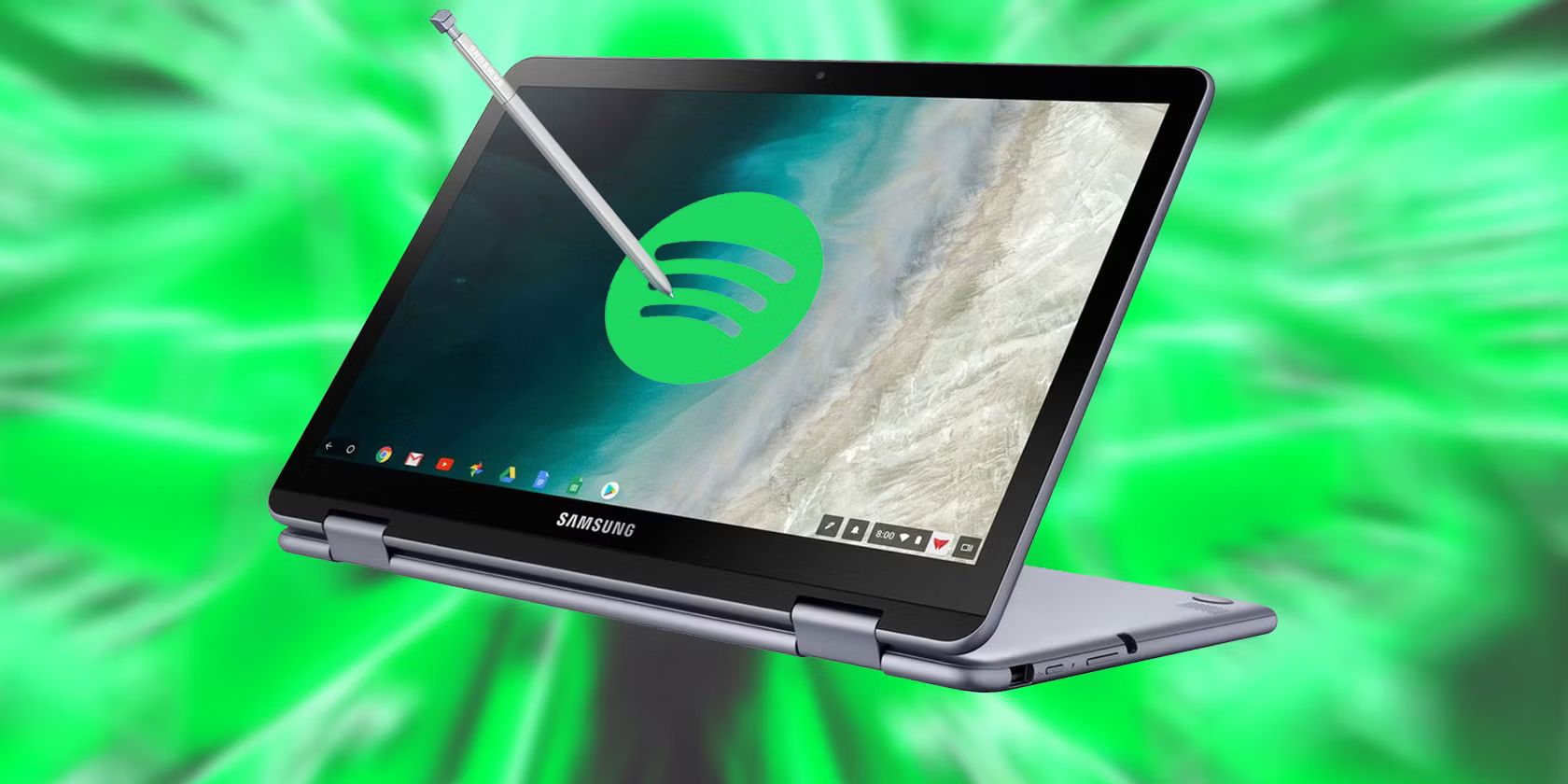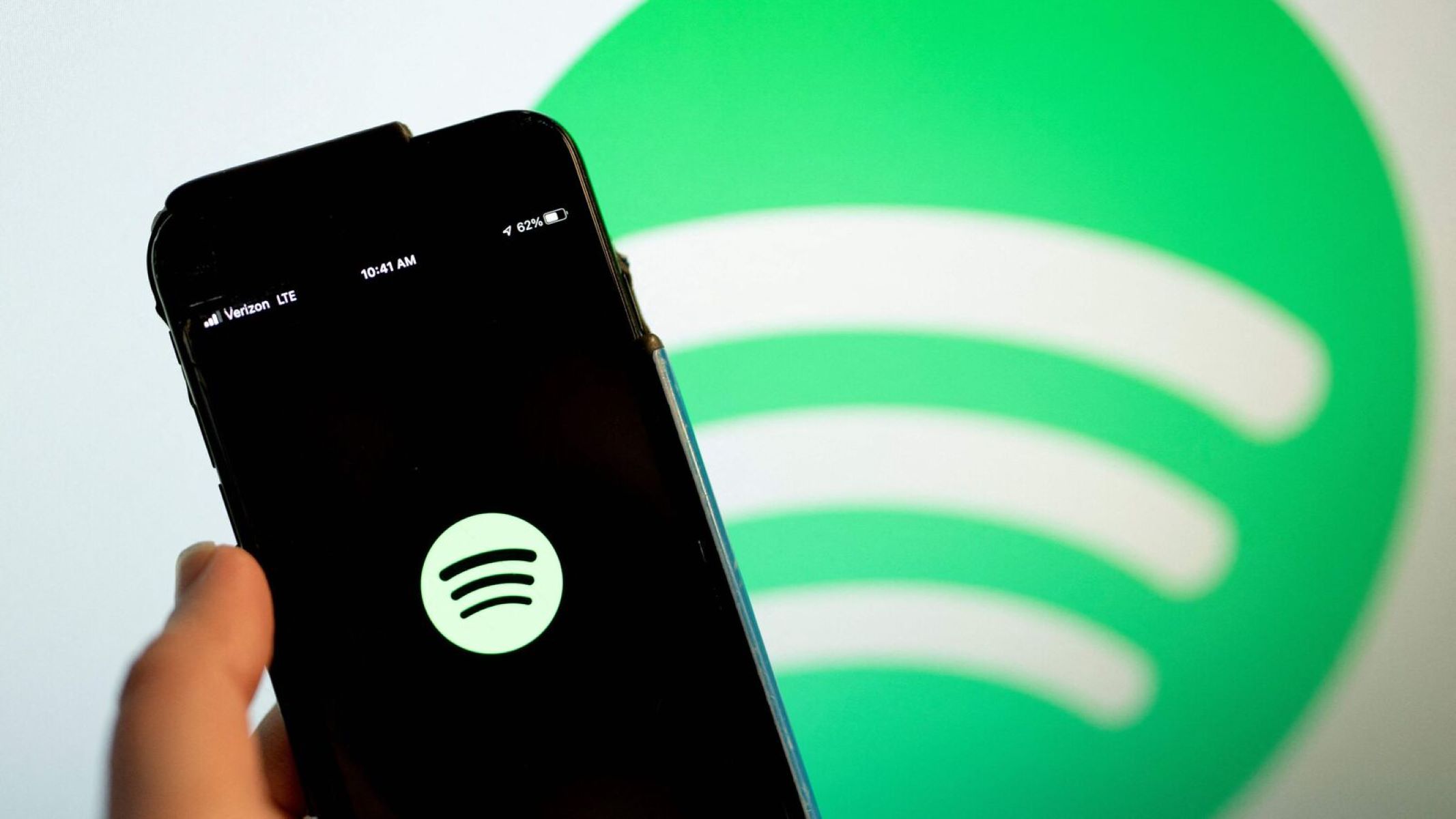Introduction
If you’re an avid music lover, chances are you rely on Spotify to stream your favorite tunes. With its vast library and user-friendly interface, it’s no wonder that millions of people around the world turn to Spotify for their daily dose of music. However, like any other app, Spotify can sometimes encounter issues that can leave you frustrated and wondering why it’s not working properly.
In this article, we’ll explore some common problems that Spotify users encounter and provide you with troubleshooting tips to get your Spotify back up and running smoothly. Whether you’re experiencing app crashes, playback issues, connection problems, or sound quality problems, we’ve got you covered.
Understanding why Spotify isn’t working as expected can save you time and frustration, helping you to get back to enjoying your favorite tunes without any interruptions. So, let’s dive in and uncover the reasons why Spotify may be acting up and how you can resolve these issues.
Common Issues with Spotify
While Spotify is a popular and reliable music streaming platform, it is not immune to occasional glitches or technical difficulties. Here are some of the most common issues that Spotify users encounter:
- App Crashes or Not Opening: One of the frustrating issues Spotify users may face is when the app crashes or fails to open altogether. This can occur due to various reasons, including outdated software, conflicting apps, or corrupted data.
- Playback Issues: Another common problem is when Spotify refuses to play music or experiences hiccups during playback. This may manifest as songs not starting, skipping, or pausing unexpectedly.
- Not Connecting to the Internet: In some cases, Spotify may have trouble connecting to the internet, resulting in error messages indicating a lack of network connectivity. This can happen despite having a stable internet connection on other devices.
- Sound Quality Issues: Users may experience irregularities in the sound quality while streaming music on Spotify. This can range from distorted audio to low volume levels or uneven equalization.
- Offline Listening Problems: For users who rely on Spotify’s offline mode, issues can arise when downloaded songs are not accessible or fail to play. This can be particularly frustrating when trying to enjoy music while offline or in areas with limited internet access.
Encountering these issues can undoubtedly disrupt your music streaming experience. However, before feeling overwhelmed, it’s important to remember that there are several troubleshooting methods you can try to resolve these problems. In the following sections, we will guide you through different solutions to help you get your Spotify back on track.
The App is Crashing or Not Opening
One of the most frustrating problems Spotify users may encounter is when the app crashes or fails to open altogether. This issue can be caused by a variety of factors, including outdated software, conflicting apps, or corrupted data. Here are some troubleshooting steps you can take to fix this issue:
- Restart the App: Sometimes, a simple app restart can resolve the crashing or not opening problem. Close the Spotify app completely, then reopen it to see if the issue persists.
- Check for Updates: Ensure that you have the latest version of the Spotify app installed on your device. Outdated software can sometimes cause compatibility issues, leading to crashes. Visit the app store relevant to your device, such as the Google Play Store or Apple App Store, and check for any available updates.
- Clear App Cache: Clearing the app cache can help resolve conflicts and free up space. On Android devices, go to Settings > Apps > Spotify > Storage > Clear Cache. On iOS devices, you can uninstall and reinstall the app to clear its cache.
- Restart Your Device: A device restart can fix various software glitches, including those causing Spotify to crash or fail to open. Turn off your device completely, wait a few seconds, and then turn it back on.
- Uninstall and Reinstall: If the problem persists, you may need to uninstall and reinstall the Spotify app. This process can help resolve any corrupted files or settings that might be causing the app to malfunction. After reinstalling the app, log back in and check if the issue has been resolved.
Remember that these troubleshooting steps may vary slightly depending on your device’s operating system. If you’re still experiencing problems with the app crashing or not opening after trying these solutions, it may be helpful to reach out to Spotify’s support team for further assistance.
Playback Issues
Another common problem that Spotify users may encounter is playback issues. This can manifest as songs not starting, skipping, or pausing unexpectedly, significantly disrupting the music streaming experience. If you’re facing these issues, here are some troubleshooting steps to help resolve playback problems:
- Check Your Internet Connection: Ensure that your device is connected to a stable internet connection. Poor network connectivity or slow internet speeds can cause playback issues. Consider switching to a different network, restarting your router, or getting closer to the Wi-Fi source to improve the connection.
- Close Background Apps: Other apps running in the background can consume system resources, leading to playback issues on Spotify. Close any unnecessary apps to free up memory and improve performance.
- Restart the Device: Sometimes, a simple device restart can resolve playback problems. Turn off your device completely, wait for a few seconds, and then turn it back on. This can help clear any temporary glitches or conflicts that may be affecting Spotify’s playback functionality.
- Update the Spotify App: Ensure that you have the latest version of the Spotify app installed on your device. App updates often include bug fixes and performance enhancements that can help alleviate playback issues.
- Toggle Offline Mode: If you have enabled Spotify’s offline mode, try toggling it off and then on again. This can refresh the offline content and resolve any issues that may be preventing songs from playing.
- Re-download the Music: If playback issues persist for specific songs or playlists, try removing the downloaded content and re-downloading it. This can help resolve any corruption in the downloaded files that may be causing playback problems.
By following these troubleshooting steps, you can address the playback issues you’re facing on Spotify and enjoy uninterrupted music streaming. If the problem persists, consider reaching out to Spotify’s support team for further assistance.
Not Connecting to the Internet
It can be frustrating when Spotify fails to connect to the internet, preventing you from streaming your favorite music. Even if your device has a stable internet connection, there may be specific reasons why Spotify is unable to connect. Here are some troubleshooting steps to help resolve this issue:
- Check Your Wi-Fi Signal: Ensure that your device is connected to a reliable Wi-Fi network. Weak signals or intermittent connectivity can cause issues with Spotify’s internet connection. Consider moving closer to the router or resetting the Wi-Fi router to improve the signal.
- Restart Your Device: Sometimes, a simple device restart can fix connectivity issues. Turn off your device, wait for a few seconds, and then turn it back on. This can help refresh the network connection and resolve any temporary glitches.
- Disable VPN or Proxy Settings: If you’re using a VPN or proxy server, they might interfere with Spotify’s ability to connect to the internet. Disable these settings temporarily and try connecting to Spotify again.
- Update the Spotify App: Ensure that you have the latest version of the Spotify app installed on your device. App updates often include improvements related to network connectivity and stability.
- Check Mobile Data Settings: If you’re using Spotify on a mobile device, make sure that your data connection is enabled and working correctly. Check your mobile data settings to ensure that Spotify has permission to use data.
- Reset Network Settings: If the problem persists, you can try resetting your device’s network settings. This will remove any saved Wi-Fi networks and their associated settings. To do this, go to your device’s settings, find the network or connectivity section, and choose the option to reset the network settings. Keep in mind that you’ll need to reconnect to Wi-Fi networks afterward.
If none of these troubleshooting steps resolve the issue, it’s advisable to reach out to your internet service provider or Spotify’s support team for further assistance. They can help investigate and resolve any underlying connectivity problems that may be affecting your Spotify usage.
Sound Quality Issues
Sound quality is a crucial aspect of the music listening experience, and encountering issues with it can be frustrating. If you’re experiencing sound quality issues on Spotify, such as distorted audio, low volume levels, or uneven equalization, there are steps you can take to improve it:
- Adjust Sound Quality Settings: Spotify allows you to adjust the sound quality settings based on your preferences and internet connection. Go to the settings within the Spotify app and navigate to the “Music Quality” or “Audio Quality” section. Choose a higher quality option if you have a stable internet connection or switch to a lower quality option if you have limited bandwidth.
- Check Your Device’s Sound Settings: Ensure that your device’s sound settings are properly configured. Check the volume level and make sure it is set to an appropriate level. If you’re using external speakers or headphones, ensure that they’re connected correctly and functioning properly.
- Check for Audio Enhancements: Some devices or audio software may have audio enhancement features enabled by default, which can affect the sound quality on Spotify. Disable any audio enhancements or equalizer settings on your device or audio software to see if it improves the sound quality.
- Try a Different Audio Output: If you’re experiencing sound quality issues on a specific device or audio output, try switching to a different output. For example, if you’re using Bluetooth speakers and experiencing poor sound quality, try connecting wired headphones or speakers directly to your device to see if the issue persists.
- Clear App Cache: Clearing the app cache can sometimes resolve sound quality issues. On Android devices, go to Settings > Apps > Spotify > Storage > Clear Cache. On iOS devices, you can uninstall and reinstall the app to clear its cache.
- Update the Spotify App: Make sure that you’re using the latest version of the Spotify app. App updates often include bug fixes that can address sound quality issues and improve overall performance.
By following these troubleshooting steps, you can potentially improve the sound quality of your Spotify listening experience. However, if the problem persists, it may be worth reaching out to Spotify’s support team for further assistance, as they can provide more specific guidance based on your device and audio setup.
Offline Listening Problems
One of the key features of Spotify is the ability to download songs and playlists for offline listening. However, there may be instances where you encounter problems with offline playback. If you’re facing issues with accessing or playing your offline content on Spotify, here are some troubleshooting tips to help resolve these problems:
- Check Offline Downloads: Ensure that your downloaded content is accessible. Open the Spotify app and go to the “Your Library” or “Playlist” section to verify that your desired songs or playlists are available for offline listening. If they’re not listed, you may need to re-download the content.
- Toggle Offline Mode: If you’re unable to play your downloaded content, try toggling offline mode off and on again. This can refresh the offline content and resolve any temporary issues that may be preventing it from playing.
- Check Available Storage Space: Make sure that you have enough storage space on your device to accommodate the downloaded content. Insufficient storage can cause problems with accessing or playing offline tracks. Consider deleting unnecessary files or apps to free up space if needed.
- Re-download the Music: If you’re experiencing playback issues with specific songs or playlists, try removing the downloaded content and re-downloading it. This can help resolve any corruption in the downloaded files that may be causing playback problems.
- Update the Spotify App: Make sure you have the latest version of the Spotify app installed on your device. App updates often include bug fixes related to offline playback that can help resolve issues and improve the overall experience.
- Restart Your Device: Sometimes, a simple device restart can fix problems with offline playback. Turn off your device completely, wait for a few seconds, and then turn it back on. This can help refresh the system and eliminate any temporary glitches affecting Spotify’s offline functionality.
By following these troubleshooting steps, you can overcome offline listening problems on Spotify and enjoy your downloaded music without any disruptions. However, if you continue to experience difficulties, it may be helpful to reach out to Spotify’s support team for further assistance and more specific troubleshooting guidance based on your device and software version.
How to Fix Spotify Issues
If you’re experiencing issues with Spotify, whether it’s app crashes, playback problems, connection issues, sound quality discrepancies, or offline listening problems, there are several troubleshooting steps you can take to address these issues. Here is a step-by-step guide on how to fix Spotify issues:
- Restart the App: Close the Spotify app completely and then reopen it. Sometimes, a simple restart can resolve minor glitches and get the app back to normal functioning.
- Check Your Internet Connection: Ensure that you have a stable internet connection. Switch to a different network or reset your Wi-Fi router if needed. A stable internet connection is crucial for seamless music streaming on Spotify.
- Update the App: Make sure you have the latest version of the Spotify app installed on your device. App updates often include bug fixes and performance enhancements that can help resolve various issues.
- Clear the App Cache: Clearing the app cache can help resolve conflicts and free up space. On Android devices, go to Settings > Apps > Spotify > Storage > Clear Cache. On iOS devices, you can uninstall and reinstall the app to clear its cache.
- Reinstall Spotify: If the problem persists, uninstall the Spotify app from your device and then reinstall it. This process can help resolve any corrupted files or settings that might be causing the app to malfunction.
- Check for VPN or Proxy Settings: If you’re using a VPN or proxy server, they might interfere with Spotify’s functionality. Disable these settings temporarily and try connecting to Spotify again.
- Adjust Sound Quality Settings: Customize the sound quality settings in the Spotify app to optimize your listening experience. Choose a higher quality option if you have a stable internet connection or switch to a lower quality option if you have limited bandwidth.
- Check Your Offline Downloads: Ensure that your downloaded songs and playlists are accessible. If not, try toggling offline mode off and on again, or re-download the content if necessary.
By following these troubleshooting steps, you can often resolve Spotify issues and enjoy uninterrupted and high-quality music streaming. However, if the problem persists or if you encounter specific error messages, it’s advisable to reach out to Spotify’s support team or consult their help center for further assistance. They can provide more specific guidance tailored to your situation.
Restart the App
One of the simplest yet effective troubleshooting steps for fixing Spotify issues is to restart the app. If you’re experiencing problems such as crashes, slow performance, or certain features not working as expected, a simple restart can often resolve these issues. Here’s how to restart the Spotify app:
- Close the App Completely: On your device, navigate to the app switcher or recent apps menu, which is usually accessed by swiping up or pressing the square or recent apps button. Find the Spotify app in the list of open apps and swipe it off the screen to close it. Alternatively, on some devices, you may need to long-press the app icon and select “Close” or “Quit” from the options that appear.
- Reopen the App: Once you have closed the Spotify app, locate its icon on your device’s home screen or app menu, and tap on it to reopen the app. Alternatively, you can use the app switcher or recent apps menu to find and relaunch the app.
By fully closing the Spotify app and reopening it, you allow the app to start fresh and reload all necessary components. This can help resolve minor glitches or temporary issues that were affecting the app’s performance.
It’s worth noting that restarting the app is often a quick and straightforward solution, but it may not resolve more complex or persistent issues. If you continue to experience problems with Spotify after restarting the app, you may need to try other troubleshooting steps or reach out to Spotify’s support team for further assistance.
Check Your Internet Connection
A stable internet connection is crucial for a seamless and uninterrupted streaming experience on Spotify. If you’re encountering issues with Spotify, such as slow loading times, buffering, or songs not playing, it’s important to check your internet connection. Here are some steps to help you determine if your internet connection is the source of the problem:
- Test Other Websites or Apps: Open a web browser on your device and visit a few websites or try using other apps that require an internet connection. If these websites or apps load slowly or do not work at all, it’s a clear indication that there might be an issue with your internet connection.
- Restart Your Router: Unplug your Wi-Fi router from the power source, wait for about 30 seconds, and then plug it back in. This can help reset the connection and resolve any temporary glitches that might be affecting the performance of your internet connection.
- Move Closer to the Router: If you’re using a Wi-Fi connection, try moving closer to the router. Poor signal strength can result in a weak or unstable connection, leading to issues with streaming on Spotify. Being in close proximity to the router can improve the strength and stability of the connection.
- Connect to a Different Network: If possible, try connecting your device to a different network. This can be a different Wi-Fi network or switching to a mobile data connection. By switching networks, you can determine if the issue is specific to your current network or if it persists across different networks.
- Check for Network Outages: Contact your internet service provider or check their website or social media channels to see if there are any reported network outages or maintenance in your area. Network disruptions can impact your ability to stream music on Spotify.
If you find that your internet connection is indeed the root cause of the Spotify issues you’re experiencing, you may need to troubleshoot the internet connection or contact your internet service provider for further assistance. It’s essential to have a reliable and stable internet connection to enjoy seamless music streaming on Spotify.
Update the App
Keeping your Spotify app up to date is essential for optimal performance and to ensure that you have access to the latest features and bug fixes. If you’re experiencing issues with Spotify, it’s worth checking if there is an update available for the app. Here’s how to update the Spotify app:
- Google Play Store (Android): Open the Google Play Store app on your Android device. Tap on the menu icon (usually represented by three horizontal lines) in the top-left corner of the screen. From the menu, select “My apps & games.” Look for Spotify in the list of installed apps and if an update is available, tap on the “Update” button next to Spotify to update the app.
- Apple App Store (iOS): Open the App Store app on your iOS device. Tap on the “Today” tab at the bottom of the screen. Then tap on your profile icon in the top-right corner of the screen. Scroll down until you find Spotify in the list of installed apps, and if an update is available, tap on the “Update” button next to Spotify to update the app.
- Microsoft Store (Windows 10): Open the Microsoft Store app on your Windows 10 device. Click on the three-dot menu icon in the top-right corner of the screen and select “Downloads and updates.” Look for Spotify in the list of installed apps and if an update is available, click on the “Get updates” button to update the app.
Regularly updating the Spotify app ensures that you have the most recent version, which often includes performance improvements, bug fixes, security enhancements, and new features. These updates can address any underlying issues that may be causing problems with the app’s functionality.
If you have automatic updates enabled on your device, the Spotify app should update automatically whenever a new version is available. However, it’s always a good idea to check for updates manually, especially if you’re experiencing issues with Spotify.
By keeping your Spotify app updated, you can ensure a smoother and more reliable music streaming experience, with access to the latest features and improvements that can enhance your overall enjoyment of the app.
Clear the App Cache
Clearing the app cache can help resolve issues with the Spotify app by eliminating any temporary data or corrupted files that may be causing conflicts. If you’re experiencing problems such as app crashes, slow performance, or certain features not working as expected, clearing the app cache is worth considering. Here’s how to clear the app cache for Spotify:
- Android: On most Android devices, go to Settings, then select Apps or Application Manager. Find and tap on Spotify in the list of installed apps. Look for the Storage option and tap on it. You should see a button that says “Clear Cache.” Tap on it to clear the app cache.
- iOS: On iOS devices, there is no direct way to clear the app cache for specific apps. However, you can uninstall and reinstall the Spotify app, which effectively clears the app cache. Press and hold the Spotify app icon on your home screen until it starts to shake. Tap on the “x” button to uninstall the app. Then go to the App Store, search for Spotify, and reinstall the app.
- Windows 10: In Windows 10, clearing the app cache is done through the Storage settings. Open the Settings app and navigate to System > Storage. Under the “Storage sense” section, click on “Free up space now.” Look for Spotify in the list of apps and select it. Tick the box next to “Temporary files” and click on the “Remove files” button to clear the app cache.
Clearing the app cache can help resolve temporary issues that may be impacting the performance or functionality of Spotify. It essentially removes stored data within the app that might be corrupted or causing conflicts, allowing the app to start fresh.
Keep in mind that clearing the app cache will not delete your personal data or saved playlists. It primarily removes temporary files, offline data, and other non-essential information that the app stores on your device.
If clearing the app cache doesn’t resolve the issues you’re experiencing with Spotify, you may need to consider other troubleshooting steps or reach out to Spotify’s support team for further assistance.
Reinstall Spotify
If you’re experiencing persistent issues with Spotify and other troubleshooting steps haven’t resolved the problem, reinstalling the app can be a helpful solution. Reinstalling Spotify can fix any corrupted files or settings and provide a fresh start for the app. Here’s how to reinstall Spotify on different devices:
- Android: On your Android device, go to the Settings app and navigate to Apps or Application Manager. Find and select Spotify from the list of installed apps. Tap on the Uninstall button and confirm to remove the app from your device. Open the Google Play Store, search for Spotify, and reinstall the app by tapping on the Install button.
- iOS: On iOS devices, press and hold the Spotify app icon on your home screen until it starts to shake. Tap on the “x” button on the app icon to uninstall it. Then go to the App Store, search for Spotify, and reinstall the app by tapping on the Get button or the cloud icon.
- Windows 10: In Windows 10, click on the Start button on your desktop and go to the Settings app. Navigate to System > Apps & features. Find Spotify in the list of installed apps and select it. Click on the Uninstall button and confirm to remove the app from your system. Open the Microsoft Store, search for Spotify, and reinstall the app by clicking on the Get button.
Reinstalling Spotify removes all the app’s files and preferences from your device or computer. After reinstalling, you’ll need to log in with your Spotify account credentials and set up your preferences again.
Reinstalling Spotify can often resolve persistent issues that have not been resolved by previous troubleshooting steps. It provides a clean installation and ensures that you’re using the latest version of the app.
If the problem still persists after reinstalling Spotify, it’s advisable to seek further assistance from Spotify’s support team. They can provide more specific guidance based on your device and troubleshoot any underlying issues that may be affecting the app’s functionality.
Check for VPN or Proxy Settings
If you’re encountering issues with Spotify, such as difficulty connecting to the service or playback problems, it’s worth checking if you have any VPN or proxy settings enabled. While VPNs and proxies can provide added privacy and security, they can sometimes interfere with the proper functioning of Spotify. Here’s how to check for VPN or proxy settings and disable them if necessary:
- VPN Settings: If you have a VPN app installed on your device, open the app and temporarily disable the VPN connection. Disconnecting from the VPN server will allow your device to connect to Spotify directly through your regular internet connection. Once the VPN is disabled, try accessing Spotify again to see if the issue is resolved.
- Proxy Settings: On some devices or networks, proxy settings may be enabled. In your device’s settings, navigate to the network or Wi-Fi settings, and check if there are any proxy settings enabled. If so, disable these settings to allow Spotify to connect directly to the internet. After disabling proxy settings, relaunch the Spotify app and check if the issue persists.
Disabling VPN or proxy settings temporarily can help determine if they are causing connectivity or playback issues on Spotify. By bypassing these settings, you can establish a direct connection to Spotify’s servers, potentially resolving any conflicts that may be present.
It’s important to note that disabling VPN or proxy settings may affect your privacy or security. If you rely on these services for specific purposes, it’s advisable to re-enable them after troubleshooting Spotify’s issues or explore alternative VPN or proxy settings that might work seamlessly with Spotify.
If the problem persists even after disabling VPN or proxy settings, there may be other underlying factors causing the issue. In such cases, it may be beneficial to reach out to Spotify’s support team for further assistance and troubleshooting guidance.
Adjust Sound Quality Settings
Sound quality plays a crucial role in enhancing the listening experience on Spotify. If you’re experiencing issues with sound quality, such as distorted audio or low volume levels, adjusting the sound quality settings can help improve the overall audio output. Here’s how you can adjust the sound quality settings on Spotify:
- Open Spotify Settings: Launch the Spotify app on your device and tap on the gear icon or the three-dot menu in the top-right corner to access the settings menu.
- Select Music Quality: In the settings menu, scroll down and find the “Music Quality” or “Audio Quality” option. Tap on it to access the sound quality settings.
- Choose Sound Quality: You will typically find different sound quality options, such as “Automatic,” “Normal,” “High,” or “Very High.” The default selection is usually “Automatic,” which adjusts the sound quality based on the strength of your internet connection. However, if you prefer a specific sound quality, you can choose “Normal,” “High,” or “Very High” to enhance the audio output.
It’s important to note that higher sound quality settings require a stable and fast internet connection, as well as ample bandwidth. If you’re experiencing buffering or playback issues, you may want to opt for a lower sound quality setting or consider improving your internet connection. Additionally, keep in mind that higher quality settings may consume more data, so it’s essential to consider your data plan if you’re using Spotify on a mobile network.
By adjusting the sound quality settings to your preference and based on your internet connection, you can enhance the audio output on Spotify and enjoy a more immersive music streaming experience.
If adjusting the sound quality settings does not resolve the sound issues you’re experiencing, it may be worth considering other troubleshooting steps or reaching out to Spotify’s support team for further assistance.
Check Your Offline Downloads
Spotify’s offline mode allows you to download songs and playlists for listening without an internet connection. If you’re encountering problems with offline playback, such as songs not playing or playlists appearing blank, checking your offline downloads can help resolve these issues. Here’s how you can check and manage your offline downloads on Spotify:
- Open Spotify: Launch the Spotify app on your device and ensure that you are logged in to your account.
- Navigate to Your Library: Tap on the “Your Library” tab at the bottom of the screen. This will take you to the section where all your saved songs, albums, and playlists are displayed.
- Select the Downloaded Section: Within the Your Library section, look for the “Downloaded” option. This option may be located under the “Playlists” or “Albums” tab.
- Check for Downloaded Content: Once you’re in the Downloaded section, you should see a list of songs, albums, or playlists that you have downloaded for offline listening. Scroll through the list and ensure that the content you want to access offline is present.
- Re-download Content: If certain songs or playlists are missing or appear as grayed out, it’s possible that the downloads have become corrupted or incomplete. In such cases, try removing the affected content by tapping on the three-dot menu next to the song or playlist and selecting the “Delete” option. Afterward, you can re-download the content by finding it again and tapping on the download button.
Checking and managing your offline downloads allows you to ensure that the desired songs and playlists are available for offline listening. It also provides an opportunity to identify and resolve any issues with incomplete or corrupted downloads that may prevent you from accessing certain content offline.
It’s important to note that space limitations on your device or the number of songs you’re allowed to download may affect your ability to manage offline content. Therefore, it’s essential to manage your downloads efficiently and consider removing content you no longer need to free up storage space for new downloads.
If the issues with your offline downloads persist or you encounter any other complications, it may be helpful to reach out to Spotify’s support team for further assistance and guidance.
Conclusion
Spotify is undoubtedly one of the most popular music streaming platforms, but like any app, it can experience issues that hinder your listening experience. From app crashes and playback problems to internet connectivity issues and sound quality discrepancies, troubleshooting these problems is essential to get Spotify working seamlessly again. Throughout this article, we have explored common issues users face with Spotify and provided practical solutions to resolve them.
Whether it’s restarting the app, checking your internet connection, updating the app, clearing the app cache, reinstalling Spotify, adjusting sound quality settings, or managing your offline downloads, these troubleshooting steps can address a wide range of issues.
Remember to approach these steps systematically and in the order presented, as starting with the simplest solutions often resolves the problem. It’s important to be patient and thorough in your troubleshooting process, as some issues may require multiple attempts or a combination of solutions to resolve.
If you have gone through the troubleshooting steps provided and are still experiencing issues with Spotify, it may be helpful to consult Spotify’s support team or refer to their help center for further assistance. They can provide more personalized guidance based on your specific issue and device configuration.
By familiarizing yourself with these troubleshooting techniques and remaining proactive, you can ensure a smoother and more enjoyable music streaming experience on Spotify. So, don’t let technical glitches dampen your love for music – take charge and get Spotify working flawlessly again!







